One thing that separates Africa from their culture to others is nothing but the African Traditional Dresses. The elegant and bright heritage represents the rich cultural diversity among ethnic groups. African traditional clothes not only reflect the traditional society but also show the vibrant threads of the African Identity. This article sheds light on African traditional dresses through its long preserving heritage and adapting to the dynamic trends in this modern world.
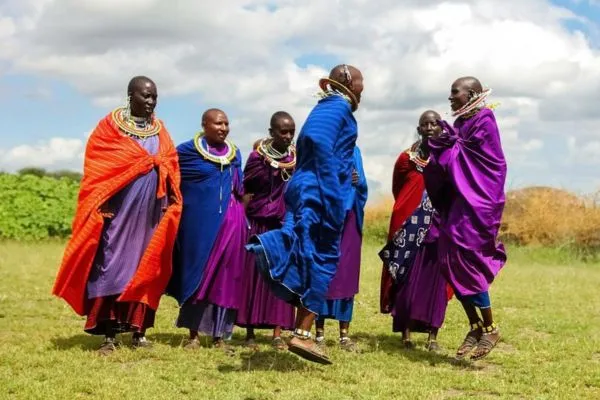
Table of Contents
What is the traditional clothing in Africa?
If you expect a particular African Traditional Dress in this segment, probably the article may not fulfill that. All thanks to the diverse clothing arena of Africa that holds significance year after year across different regions. Here is the list of a few traditional clothing that fall under the African Traditional Dress:
- Kente
The woven fabric cloth originated in Ghana, named Kente, is made of an intricate pattern. It is worn by wrapping or draping over the shoulder. The main fabric of this clothing is silk or cotton.

- Boubou
The Senegalese functional robe worn by men and women is named as the Boubou. It is sewn from a piece of fabric 150 cm wide and lengths depending on the wearer’s preference.
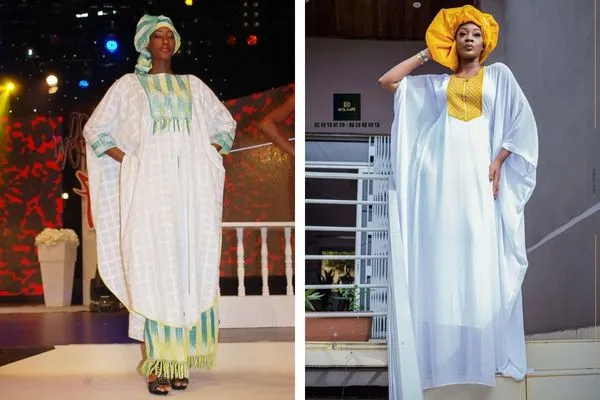
- Kanzu
Kanzu, tunic, or Thawb, all these traditional clothes are popular in Uganda. Mostly, these clothes are worn by men on occasion.

- Zulu
Zulu is a traditional clothing that is brightly colored. Mostly, it includes beadwork and woven grass skirts. These are also worn during celebrations.

- Kaftan
Kaftan is a North & West African traditional dress. Both men and women wear this.

- Maasai Shuka
The Maasai are noted for their distinctive red-checked blankets known as shuka. These are frequently worn as clothes or as accessories by both males and females. The print of this blanket or clothes is similar to the check one.

- Djellaba
The djellaba is a long, hooded robe. It is commonly worn in North and West Africa. It’s especially popular in Morocco.

- Dashiki
Dashiki or Kitenge is a prominent type of African apparel. While it is predominantly worn in West Africa, it has spread to East Africans, particularly those in Kenya and Tanzania.

- Raffia Cloth
One of the traditional apparel in Central Africa is Raffia Cloth. It frequently includes clothes made of woven raffia fibers. These are perfect for the tropical environment. Besides, this particular cloth comes in a variety of patterns and designs.

- Animal Skins
This traditional dress of Africa is fashioned from animal hides or skins. Nomadic or hunter-gatherer communities are frequently connected with these traditional clothes.
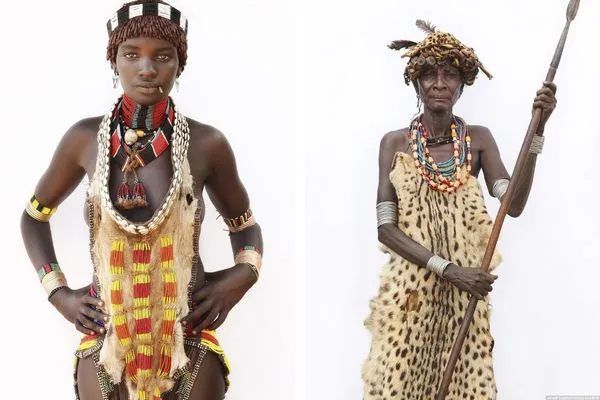
- Agbada
The agbada is a flowing gown with broad sleeves and rich embroidery. It is worn by males in West Africa on occasion.

- Aso-Oke
The Yoruba people of West Africa produced Aso-Oke fabric, which is a hand-woven cloth. This Yoruba dress tradition is made up of four parts: a blouse called a “buba,” a wrapped skirt called an “iro,” a head tie called a “gele,” and a shoulder sash called an “iborun” or “ipele.”

- Kanga
The Kanga is a vibrant cloth worn by women and men in the African Great Lakes region. The first pattern of the Kanga was patterned with little dots. They are frequently sold in pairs. Most people give kanga as a present at different events.

African Traditional Dress Male
Here are a few dress types of African tradition that men have worn throughout the years, irrespective of occasion. They are:
- Men of Culture: Kanzu, Tunic, Thawb
In the region of the African Great Lakes, males wear kanzus. The color of Kanzu is white or cream. Male people from Burundi, the Democratic Republic of the Congo, Ethiopia, Kenya, Malawi, Rwanda, Tanzania, and Uganda wear this African tradition Dress Kanzu.
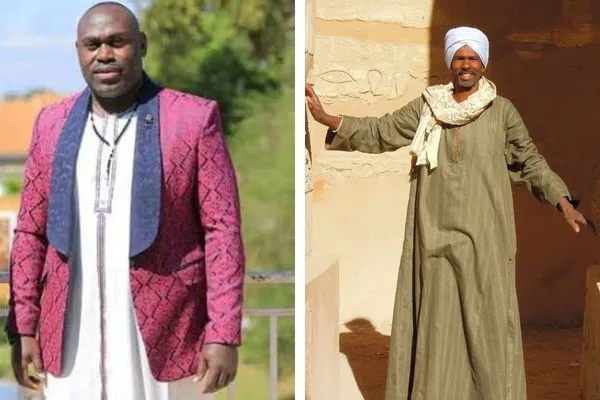
Men in Uganda frequently wear it to weddings and festivities. Besides, The Kanzu represents the sense of power and refinement.
- Isiagu
Isiagu is the traditional attire of the Igbo men of South-East Nigeria. The clothing has another name Chieftaincy. Mostly this silk fabric made by Isiagu is worn by African males at traditional meetings and the funerals of the chief.
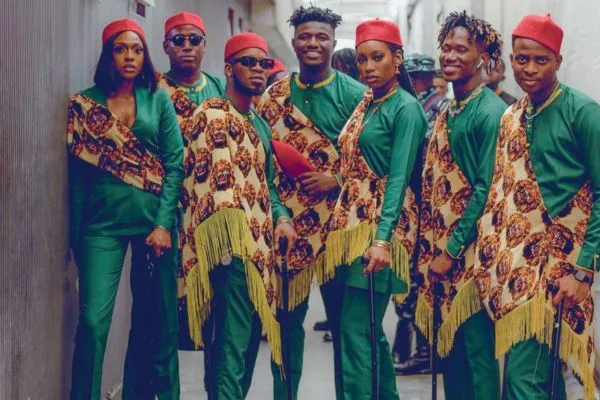
- Kaftan
In North and West Africa, males wear a flowing robe-like garment which is named as Kaftan. It is constructed of cotton, silk, or brocade, and can be plain or embroideredly decorated.

- Agbada
The agbada can be recognized due to the broad sleeves. It is popular in Nigeria and other West African nations. It is frequently worn on important occasions and can be rather extravagant, with rich fabrics and embroidery.

African Traditional Dress Female
The list of African Traditional Dress for females are:
- Boubou:
Similar to the dashiki suit, the boubou or grand boubou is a flowing wide-sleeved robe worn throughout West Africa and to a lesser extent in North Africa.

- Gele:
Gele is not an entire outfit that represents African traditional dress for females. Rather, it is a headgear that Nigerian women wear by making their head coverings decorative.

- Wax Printed Dress:
African traditional dress for females frequently features wax print textiles. Wax print dresses are flexible and fashionable, and these materials have vivid, dramatic designs.

African Traditional Dress Name
Here is the list of African Traditional Dresses:
- Agbada
- Boubou
- Dashiki
- Djellaba
- Habesha Kemis
- Isiagu
- Iro Ati Buba
- Kende
- Kanzu
- Kaftan
- Shuka
- Toghu/Atoghu
- Thobes
- Rafia Cloth
- Zulu
African Traditional Dress Designs
One thing that is similar in African Traditional Dresses, is the colorful patterns and the significance of culture and symbol. So, here is the list of African Traditional Dress Designs which are mostly common. For instance:
- Loose-fitting.
- V-Necked Shirt
- Eye-Catchy Patterns.
- Wax print fabric.
- Lightweight.
- Flowy dress.
- Robes, headwraps, as well veils.
- Short-sleeved, button-up dress.
- Gowns.
African Traditional Dress Styles
African traditional dress styles are as follows:
- Colorful and patterned Button up shirt.
- Indigo-dyed flowing robes, veils, and headwraps.
- Robes, Skirts, and Stoles with the Main Outfit.
- Geometric patterns.
- Shirts, dresses, and jumpsuits.
African Traditional Dress Code
African traditional dress has individual dress codes based one:
- Social customs.
- Occasions
- Cultural Significance
- Color Symbolism
- Fabric Availability
- Gender-Specific
- Seasonal and Environmental considerations.
- Modern Adaptation.
African Traditional Dress for Kid Girl
Even kid girls are no exception in the category of African traditional Dress. The dresses of kid girls vary from one region and culture to another. Yet, there are some specific dresses that Girl kids wear at events and other times. For instance:
- Trapeze
Trapeze costumes are lightweight, with a flair style that allows for easy movement. They are perfect for hot day outings and are needed for any event.

- Retro-Printed Collar Dress
A gown is always a requirement for an adorable little angel. Treat your little princess to a photograph with this eye-catching outfit. The collars and red bow on the neckline make her look like a boss baby.

- Dashiki Mini Dress
Dashiki small dresses for girl kids are charming and fashionable clothes. These clothes blend with traditional Dashiki motifs into children’s apparel. A Dashiki mini dress is a modernized Dashiki that is tailored to be shorter in length and stays above the knees. These gowns are a popular choice for special occasions, cultural activities, or simply for kids who want to wear something different and eye-catching. The clothing goes well with free-flowing light clothing, athletic shoes, and protective sunglasses. The bracelet sleeves add a sophisticated touch to the dashiki outfit, but it can also be constructed without sleeves.

- Sepedi Traditional Dress
On occasions, dress your girl kids in authentic Sepedi fashion. The gown can be short or long-sleeved, and a flared tulle. You can add a silk layer extension at the bottom.

- Printed Skater Gown
Skater dresses are basic yet adaptable, and they may be worn to any occasion. Select your favorite print with long or mid-length sleeves. Matching shoes will complete the look. Besides, Get accessorized your little kid with a ribbon and a little matching handbag.

African Traditional Dress for Ladies
For ladies, African Traditional Dress is diverse and stylish. Because it reflects the cultural and ethnic diversity of different tribes available in Africa. Here are some of the African Traditional Dress for Ladies:
- Buba and Wrapper:
A loose-fitting shirt (buba) and an iro (wrapper). Fabrics can be vividly colored and intricately patterned.
- Kente Cloth:
Women in Ghana wear this as attractive wraps or tailored outfits. Kente is well-known for its vibrant and detailed patterns.
- Gele and Iro:
A type of headwrap. Iro is a wrapper worn by Yoruba women in Nigeria. These are frequently matched with a blouse (buba) and can be extremely fashionable.
- Kitenge:
It is a vivid, wax-printed fabric used in several East African countries for dresses, skirts, and blouses.
- Dashiki:
Loose-fitting tops decorated with bright embroidery or motifs.
- Mud cloth/ Bogolan:
A hand-dyed fabric is used in Mali for dresses and other items.
- The Dirac:
A two-piece ensemble consisting of a long, flowing dress and a headscarf that is commonly worn by Somali women.
- Zulu:
It includes brilliantly colored skirts, beaded accessories, and vibrant blankets.
- Raffia Skirts:
Ladies wear woven raffia fiber skirts, typically with accompanying woven ornaments.
- Kanga:
The kanga is a printed cloth.
African Traditional Dress Female Pictures
Here are some pictures given of African Traditional Dress that Females wear across the continent:
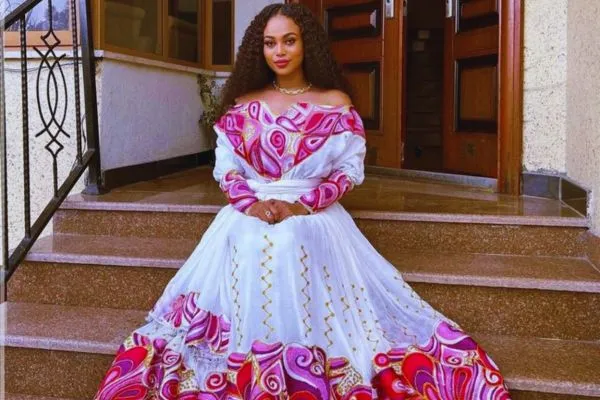
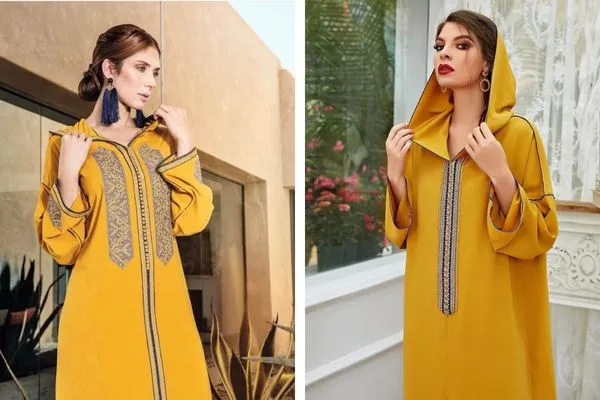

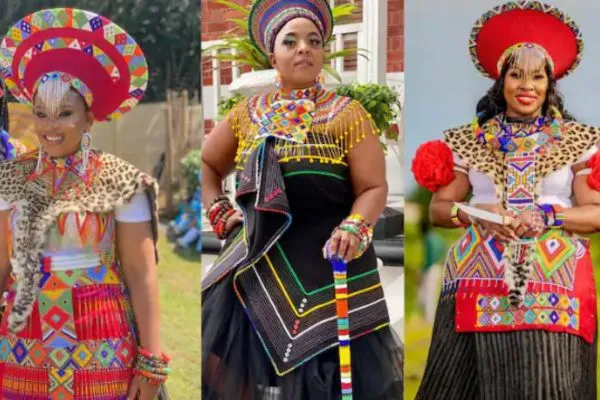


Conclusion
African Traditional Dress still is highly valued in today’s world as it continues to hold the ethnic significance to date while keeping the cultural heritage and diversified essence in mind. If you explore a bit deeper, you will see that traditional African dressmaking and fabric sources vary from one region to another. Mostly there is a dominance of silk fabric in the construction of African dresses. Besides, printed designs are mostly available in traditional styles of clothes ranging from ruffles, and sashes, as well as embroidery.
You may Like:
- Japanese Traditional Clothing
- Chinese Traditional Dress Male and Female
- Traditional Clothes China for Men and Women
- Korean Traditional Clothing Male and Female
- Traditional Clothing of France
- Russian Traditional Clothing For Male and Female
- Indian Traditional Ethnic Clothing
- Traditional American Dress Male and Female
- Traditional Mexican Dress for Women
- Traditional Mexican Wedding Dresses You Can Try
- Traditional Mexican Blouses You May Try
- Ethiopian Traditional Dresses You can Try
